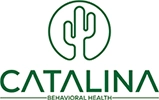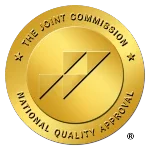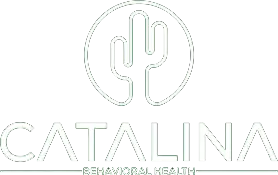Substance Abuse Treatment that Supports Traumatized Clients
Healing from trauma requires a multifaceted approach, and this is where trauma-informed care comes in. The foundation of trauma-informed care is the assumption that almost every client has been exposed to some sort of traumatic incident.
The term “trauma-informed care” refers to a patient-focused medical approach to addressing a traumatic event or psychological trauma and preventing traumatic relapses. Clients who have experienced trauma or adverse childhood experiences can benefit from trauma-informed care – coupled with substance use disorder or otherwise.
Please keep reading to learn more about our trauma informed addiction treatment, and how Catalina Behavioral Health can help support your recovery!
Trauma Informed Programs – Call Now!
Treatment Plans During Trauma Informed Care
The six pillars upon which trauma-informed care is founded are as follows:
Safety is Paramount
Protection from harm, both physical and emotional, is critical. To achieve this goal, it is necessary to ensure the safety of both the clients and the specialists. During any addiction treatment or trauma-informed care, an atmosphere of safety must first be established before moving forward with any type of therapy.
Mutual Trust
Sincerity in healthcare is founded on the open and honest dialogue between the doctor and the client. Because a trauma-informed approach often requires disclosing deep, personal information. Building credibility between caregivers and their clients and loved ones should be a priority.
Collaborative Environment
Collaboration in this context places a premium on open lines of communication among all participants in the diagnostic process. This is true of any mental health services but takes precedence in the case of treatment for traumatic events. Ultimately, this means that everyone involved is considered an integral component of the diagnostic process.
This method facilitates the free flow of information during mental health services, which speeds up the process of arriving at an accurate diagnosis and viable treatment plans for substance use disorders or co-occurring disorders. There is also less of a disparity in authority between different departments and departments at the same levels of care.
Peer Therapy and Support Models

By putting patients in contact with others who have experienced trauma like their own, peer therapy can be an effective part of any treatment for a traumatic event. This can make the client feel less alone and give them a greater sense of security, as many are sheltered or self-guarded because of the events surrounding the traumatic event or traumatic events.
Empowerment
The successes, positive values, comments, and interests of the client are the focal points of trauma-informed care and other mental health care. For mental health practitioners to truly empower their patients and staff, they must learn the value of active listening at all organizational levels and during trauma therapy sessions.
In addition, doctors should make an effort to comprehend and verify reasonable client recommendations regarding the origins of their traumatic experiences or negative mental health occurrences. All interactions among staff members during trauma-informed care must adhere to this idea.
Culture is Crucial for Trauma Informed Addiction Treatment
This principle calls for doctors to take into account a client’s cultural background and gender when formulating a treatment plan for substance use disorders – and assessing the client’s response to that plan. Both external and internal sources of trauma need to be addressed in order to help the patient recover. It is also implied by this notion that the healthcare provider should take into account their own unconscious biases and preconceptions.
Evidence-based medicine is the backbone of the trauma-informed addiction treatment approach. Accordingly, the appropriate treatment for substance use disorders in the form of dual diagnosis would be administered if the client exhibited the associated symptoms. Using this strategy, medical decisions will be based on evidence rather than gut feelings.
Address Trauma Through a Comprehensive Approach
All aspects of a person’s health, emotional and physical, are considered in trauma informed addiction treatment. Implementing trauma-informed care requires an emotional response and an all-inclusive scenario.
As a result, the client is seen as a whole rather than a collection of isolated components. A condition’s potential systemic repercussions are recognized. Substance abuse can cause a domino effect, whereby one health problem can lead to another.
Conditions Treated During Trauma-Informed Care
A wide range of stimuli can lead to traumatic experiences. Some examples of everyday trauma and trauma symptoms are listed below.
Symptoms of Trauma During Childhood
Abuse, loss, and physical and/or mental harm are all examples of what researchers call “adverse childhood experiences,” or ACEs. Approximately 1 in 6 adults has had several ACEs. What people take away from these events and how they’re interpreted can vary greatly. It’s vital to give the client time and space to share their experiences with trauma.
Combat or Being Involved in Warfare

There is a lot of research on the psychological toll of war and other violent experiences in relation to symptoms of trauma. Those who have served in the armed forces and returned from active duty in battle are typically placed here. However, many of the same symptoms and triggers might be brought on by a traumatic childhood and adverse childhood experiences.
Death of Friends or Family Members
Everyone will experience some form of loss or death. These incidents may serve as significant traumatic triggers and lead to relapses, depending on the patient’s age, degree of emotional connection, and mental condition. Experiencing these things as a teenager or through violent ways can amplify their effects.
Domestic Abuse
The ability to develop meaningful connections with others might be significantly hampered by exposure to domestic abuse. Those who have survived an incident of domestic violence may struggle with trust, confidence, and safety.
These include not only the abused individual but also anyone who has emotional effects as a result of the abuse.
Mental Abuse
One of the most complex forms of abuse is emotional abuse. Negative emotional manipulation can take the shape of anything from sowing seeds of doubt in your mind to gaslighting, guilt-tripping, and beyond. Emotional abuse survivors may have a low opinion of themselves and have trouble trusting their intuition.
24 Hour Detox & Rehab Helpline
Treating Drug Abuse with Trauma Informed Practices
Substance abuse disorders and traumatic experiences frequently occur together. Psychologically speaking, the combination of these two factors can wreak havoc on both the body and the psyche.
PTSD and Drug Addiction
Persons with PTSD are 5 times as likely to require treatment for substance abuse than the general population. There is sufficient evidence linking the two for most clients in substance use recovery programs to also receive trauma-informed counseling and treatment.
There is substantial evidence that people with PTSD are more likely to drink heavily and frequently than other categories of drinkers. This can lead to a vicious cycle in which PTSD sufferers turn to alcohol to dull the effects of their symptoms, which in turn leads to increased reliance and tolerance. Counseling to learn effective coping strategies is a common component of treatment for both conditions.
What is the Relationship Between PTSD and Substance Abuse?

Here are some numbers on PTSD and substance misuse among veterans and victims of domestic violence:
- Individuals with PTSD are more likely to experience SUD (46% higher)
- Among women receiving treatment for substance abuse, 59% also suffer from post-traumatic stress disorder.
- Forty percent of people struggle with post-traumatic stress disorder and substance use disorder together.
- When compared to people who have not experienced physical abuse, those who have been abused are 12 times more likely to develop an alcohol use disorder.
Clients with PTSD and a form of substance use disorder are more likely to be alcoholics. Several factors, including widespread acceptance of alcohol and low prices, contribute to this trend: the prevalence of persons who have experienced trauma, the widespread availability of alcohol, and the low cost of alcohol per unit.
The Combination of Care for Trauma Treatment
The combination of trauma treatment and substance abuse rehabilitation often requires psychotherapy. These are some of the goals of this part of the treatment:
- Effective methods of dealing with stress
- Developing a more positive perception of oneself
- Shift in perspective
- Releasing attachment to negative thoughts and feelings
- Self-care
The second component is the medical treatment for withdrawal symptoms and for general mood stabilization following long-term substance abuse and/or depression.
For effective addiction treatment, it is necessary to address both the trauma and the substance abuse.
Trauma Informed Practices: Exposure Therapy
Care for trauma patients is based on what has been shown to work in the medical literature. PE, or prolonged exposure therapy, is a tried-and-true method of treatment in this area. Several studies have demonstrated that PE is not only effective but also well-tolerated and safe. The term “cognitive-behavioral treatment,” or CBT, encompasses exposure therapy. It has been widely studied for its potential to alleviate symptoms of post-traumatic stress disorder (PTSD) and other traumas.
During PE, the client is guided to recall and relive traumatic memories in a safe and therapeutic setting, with the goal of eventually recreating specific triggers such as a partner or spouse and specific situations they bring up. You can gain a new perspective on the traumatic experience and, hopefully, deal with it better as a result.
Licensed Addiction Treatment – Call Now!
Non-Exposure Therapy
In contrast to exposure therapy, non-exposure therapy encompasses any form of treatment that is not directly related to the patient being exposed to a threatening situation. Psychotherapy can help with emotional processing, trauma recovery, and improving one’s sense of self.
Doctors may choose non-exposure therapy when they are either unable to or unwilling to risk their patients’ progress with exposure. The use of CBT methods other than exposure therapy is generally accepted and tolerated.
Medications for the Symptoms of Trauma
There is not yet a medicine that can simultaneously treat trauma and SUDs. This is because people with an actively occurring SUD have a very small chance of being accepted into pharmacological test groups.
Establishing Newfound Self Worth
The key to successful rehabilitation is self-determination. Both traumatic experiences and substance use disorders increase the risk of developing a low sense of self-worth. The key to avoiding relapse is changing and preventing this self-perception.
For people to feel empowered, they need to be in a safe and accepting setting where their feelings may be heard and respected.
Research on the Integration of Trauma and Substance Use Disorder Treatment

Concurrent trauma and substance abuse treatment is a complex issue, and it is difficult to replicate successful approaches. It is still early in the writing of the literature on the efficacy of various social groupings and surroundings.
However, there are published empirical data including female victims of domestic abuse. It has been shown in these studies that 3 months after completing therapy for PTSD and SUD, patients show fewer symptoms of either disorder.
As an added bonus, program graduates were further ahead in their recovery than those who did not. This data provides support for the trauma-informed addiction treatment model and its potential usefulness in assisting individuals in overcoming long-term dependencies.
Substance Abuse and Traumatic Stress
The following are the main approaches to treating substance abuse and traumatic stress.
ATRIUM
Addiction and Trauma Recovery Integration Model, or ATRIUM for short. Female victims of childhood or interpersonal trauma can participate in this 12-week program. As a means of rehabilitation, ATRIUM emphasizes the integration of one’s mental, physical, and spiritual well-being. The physiological and psychological effects of trauma are also covered in ATRIUM’s curriculum. It also promotes creative writing and other forms of CBT and DBT practices.
Women’s Recovery
The 17-session paradigm used in Women’s Recovery: Helping Herself Heal is designed to aid in the individual’s own healing process. As the course progresses, the women gain a deeper emotional and spiritual awareness of themselves through a trauma-informed care model designed specifically around female participants and their experiences.
Discussions will center on how internal and environmental influences interact to shape one’s sense of identity. In addition, it encourages conversation on sexuality, body image, motherhood, and relationships within the family and beyond.
Seeking Safety Approach
In order to help people heal from trauma, the Seeking Safety approach consists of 24 sessions. Although it was designed specifically for girls and young women, anybody who has experienced trauma can benefit from it. Safe practices, high standards, meaningful material, and comprehensive trauma-informed care are at the heart of their model.
TREM
Self-care is at the heart of TREM, an approach to trauma recovery and empowerment that spans 29 sessions and is designed specifically for women. The book places a heavy emphasis on resiliency and mending techniques to help overcome traumatization. Catalina also offers an informal trauma response assessment resource and worksheet that can offer insights.
The practice of trauma response exposure management (TREM) also emphasizes the importance of learning to cope with the long-term aftereffects of trauma.
Triad
The Triad program is a 16-week course designed to teach clients the emotional skills and teachings necessary for sustained sobriety. The main objectives include enhancing recovery from trauma and enhancing mental health while reducing substance usage. Because trauma is thought to induce disorders in several aspects of the mind and body, the triad model is seen as holistic.
Trauma Relapse: What Next?

One of the main focuses of any trauma informed addiction treatment setting is ensuring that clients do not experience any further trauma. Without exposure therapy, re-traumatization can cause significant mental setbacks and relapse of substance abuse disorder. To prevent further trauma, every precaution must be taken.
It’s possible for someone to be re-traumatized by being exposed to any situation or stimulus that brings up traumatic memories. Retraumatized persons’ bodies and minds may react as if they were still in the horrific setting. Excessive breathing, perspiration, emotional outbursts, etc may make it seem like the experience is being lived through all over again.
Breathwork for trauma, EMDR, and other exercises are designed to help build resistance to the intensity of these memories.
What are the Causes of Relapse
Traumatic memories are triggered by unique and complex factors. In most cases, you need to have some sort of personal connection with a patient in order to learn what sets them off. However, the following are some of the most frequent causes:
- Noises that are too disturbing, with noise sensitivity due to CPTSD or PTSD being common
- Unwanted physical contact
- Particular sounds
- Words
- Smells
- Visiting areas where the trauma happened
- Anniversary of event
- Harmful reminders of the abuser’s appearance
- Colors
- Unrestrained pessimism
Methods to Prevent Traumatic Relapse

From the standpoint of the client, here are some recommendations for how to best prevent re-traumatization.
- One must learn to recognize and identify potential triggering events.
- Establish a schedule
- Intensify relapse prevention strategies.
- Look into the effects of trauma on the brain.
From the standpoint of healthcare providers, here are some recommendations for reducing the risk of further trauma.
- Become friendly with a client
- Justify why trauma has such a profound effect.
- The key to success is keeping lines of communication open.
- Think about what the client has said and react accordingly.
- Rewards that work for the client
Guidelines and Regulations of Trauma Informed Care
In order to provide trauma-informed treatment, an organization has to have policies and procedures in place. All members of a client’s team may concentrate on providing trauma-informed treatment because they share a clear awareness of its importance. Once in a while, a review of these processes is necessary to maintain comprehension and ongoing commitment.
24 Hour Addiction Treatment – Call Now!
Emphasis and Goals: Empowerment over Trauma
The goal of trauma informed addiction treatment is to change the conventional understanding and delivery of medical care. By using a more comprehensive approach, more thorough and efficient therapies are now possible to help overcome clients with a traumatic experience.
To be effective in this field, organizations and rehabilitation settings must maintain a culture that preserves the essence of trauma-informed care while keeping their focus and aspirations on the client and the improvement of their health.
Trauma Informed Addiction Treatment: Found Here
At Catalina Behavioral Health, our trauma-informed care is evidence-based and effective, allowing us to better treat victims of various forms of trauma. If you’re suffering from any form of trauma, combined with substance use or otherwise, contact our Admissions team today.
All calls are completely confidential and discreet, so please reach out now to get options and move past the need to self-medicate and into lasting freedom from trauma!





